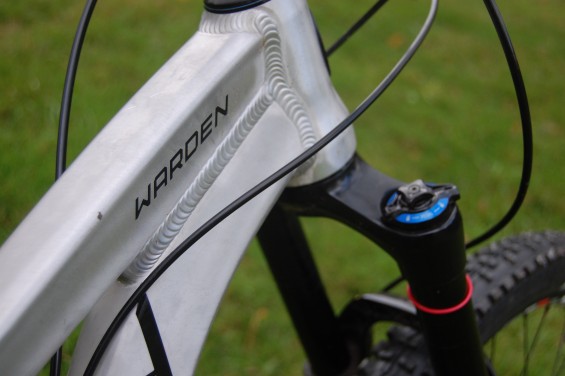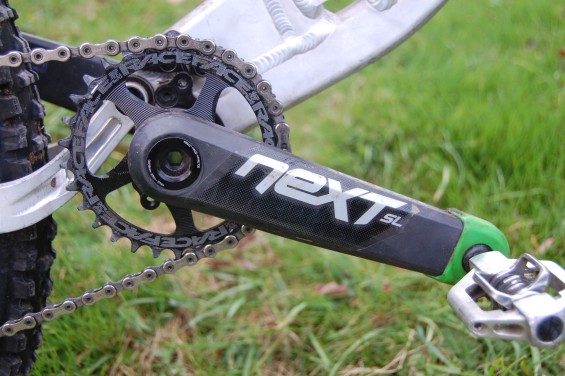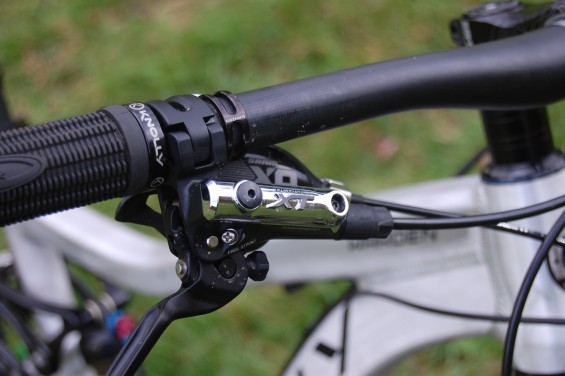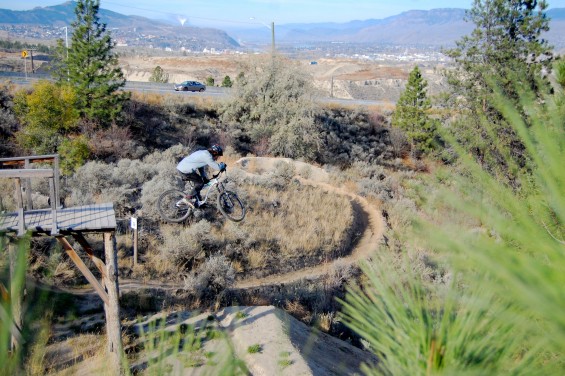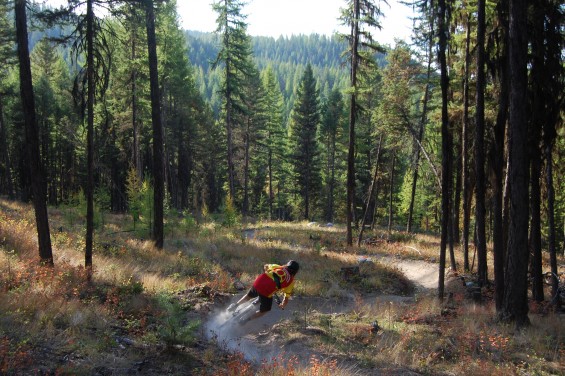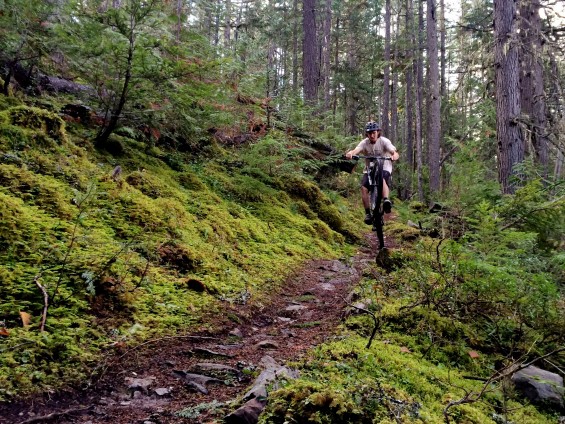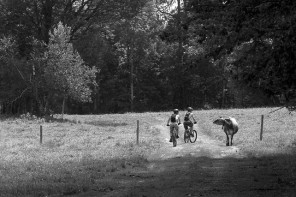Two years ago, Knolly Bikes decided they would step away from the 26-inch platform with their creation of the 27.5 Warden. Like many manufacturers, they hoped to design a bicycle that could handle many aspects of mountain bike riding. Knolly has always been known for its bomber frame designs that gobble up the most technical terrain like a fat kid on Thanksgiving. I was a little worried before purchasing the Warden knowing most of the riding I do is cross-country oriented. I picked the bike because of the descending characteristics associated with Knolly, and thought I would have to work harder to keep the bike afloat on the climbs.
Components
Knolly offers multiple build kits to cover your budget, and get you moving. Both kits use a Sram drivetrain, one being the X1, but I opted for the XO1 kit.
Rider Weight: 170lbs Height: 5’11”
Frame size: Medium
Drivetrain- XO1 rear derailleur and RaceFace NEXT SL 175mm cranks with a 30 tooth narrow wide chainring.
Roll Control- Stan’s 3.30HD hubs are laced to Stan’s indestructible Flow EX rims.
Cockpit- Knolly spec’ed the bike with a RaceFace Turbine 35 x 60mm stem and RaceFace NEXT carbon 760mm handlebars. The cockpit is complete, using Shimano’s XT brakes with a 180mm rotor in the front and a 160 mm rotor in the rear.
Squish- Rock Shox Pike Solo Air 160mm on the front paired with the Fox Float CTD.
I was impressed with the components that came with Knolly’s build kit although there are a few things that could be substituted. The brakes give ample stopping power, but in steeper terrain could have benefited from a 203mm rotor on the front. And the RaceFace bars didn’t give me any problems, however I believe the cockpit would really be complete with a wider set-up.
Descending
In the last year I have had the opportunity to ride the Warden on a variety of downhill terrain. The bike felt confident with its slack head tube angle in steep terrain, and the 150mm suspension platform was enough to absorb drops at parks that double crown downhill bikes are designed to hit. Although the precision of hitting drops had to be more calculated than a downhill bike, the Warden still felt comfortable on the landings. What the bike felt most eager doing was jumping into rugged descents.
Cornering
While the bike handled well descending the steep rim eating terrain, I was also impressed with how the Warden felt cornering. It took some time to get used to, but the bike is extremely responsive. With Knolly’s Fourby4 linkage suspension design, the bike doesn’t lose any stiffness turning. It felt more than confident diving into corners, and at times I needed to have more patience while entering them. At first I found myself double turning because of how confidently the bike could dissect turns.
Another benefit of the Warden is the adjustability of bottom bracket height. I ended up riding the low setting, which puts the BB at 337mm and the HT at 65.5*. This setting enhanced the descending characteristics by how low the bike felt through corners. It gives the rider a more playful feel allowing them to dance on the pedals in order to place their weight evenly throughout the bike rather than on top of the bike. Although I didn’t ride the higher position, I don’t think the ability to fine tune your body position, like with the low position, would be as achievable, and would almost feel tippy.
Climbing
A lot of the climbing I do consists of tighter single track trails. I was having a hard time trying to pick apart the Warden’s weaknesses until I started riding longer double track climbs. At first I thought I was running low pressure in my shock until realizing, because of the bikes slack head and seat tube angles, it was harder to keep the front wheel from wandering. This was present during some of the single track climbing as well. Knowing that the front wheel wasn’t going to hold its line definitely took some getting used to.
This con, at times, actually benefited the navigation on technical single track climbs. While climbing slowly, the pilot can use their weight that is distributed more to the back of the bike as an advantage by placing the front tire in their riding line. It wasn’t the best feeling to have the front wheel so susceptible to random steering, but could be reigned in with more time on the bike.
Final thoughts
Tennessee red clay, Pisgah chunder, Whitefish ribbons, Kamloops freeride and Kingdom Trails’ flowy loam. It isn’t hard for me to say that in all of these places the Knolly Warden delivered a playful, sturdy ride. Sure, being that it is an aluminum frame with very few carbon components, it isn’t the lightest rig. But the Warden makes up for its heavy materials in the variety of trail it excels at. The Warden delivers high speed fluidity through rough terrain and, given some tweaking to your climbing style, can navigate some of the most root crawling, baby head strewn climbs.
The last ride I did on the Warden was a 21 mile xc ride in Bend, OR, flat and smooth. The bike pedals without giving you the feedback from “pedal bob”. But when a trail side feature or sharp corner presents itself, the Warden’s playfulness isn’t compromised. Knolly did exactly what they set out to do by creating the Warden. It is a bike that wants to go fast and excels at a variety of riding. If it isn’t given the speed it desires, that fat kid may take the reigns, and start wandering in search of the turkey.
Ride it like you stole it.


